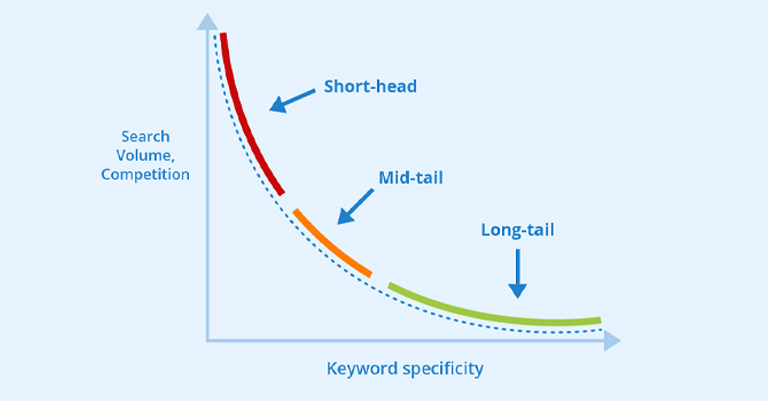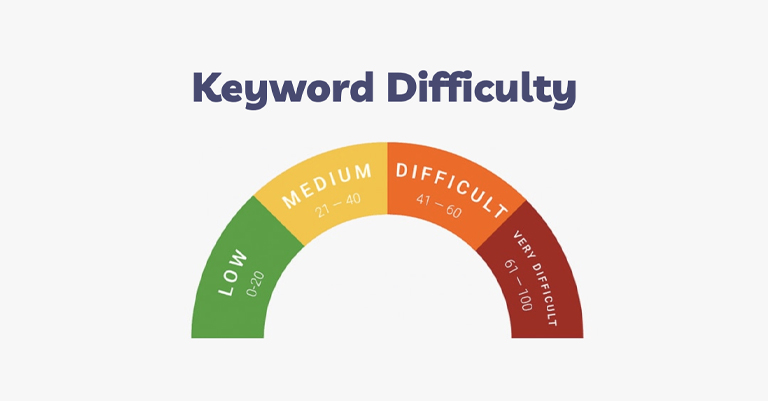Effective keyword research builds the foundation for SEO success. Unfortunately, many SEO pros fall into common keyword research mistakes that silently damage their results. These errors can affect anyone, from beginners to seasoned experts, and often go unnoticed while holding back your rankings.
This guide covers the most harmful keyword research mistakes and provides simple fixes. You’ll discover how to spot these issues in your strategy and learn practical ways to improve. By avoiding these pitfalls, you’ll develop a more intelligent keyword approach that attracts more of the right visitors to your site.
Ready to strengthen your SEO strategy? Let’s explore the keyword research mistakes you might be making and how to correct them.
Ignoring Search Intent
Many SEOs focus on search volume but miss why people are searching. Search intent is the real reason behind each query. SEOs often skip this step when they rush to find popular terms. When you ignore intent, you may create content that doesn’t match what users need. Google now knows how to spot user intent much better than before. This means not matching intent will hurt your rankings more than ever. Users quickly leave sites that don’t answer their actual questions.
Why It Matters
When you pick keywords without knowing the intent, you risk making content that doesn’t help users. Google shows content that meets user needs, so getting this wrong hurts your rankings.
For example: If you target “apple pie,” are users looking for recipes, history facts, or nutrition info? Without knowing the intent, your content might miss the mark.
How to Fix This
Check what’s already ranking for your target keywords. Look at what type of content Google shows first. Is it:
- How-to guides?
- Product pages?
- Information articles?
- Comparison posts?
Look at the “People also ask” box and “Related searches” at the bottom of Google results. These give clues about what people want to know.
Group your keywords by what users want, then make content that meets those needs.
Focusing Too Much on Search Volume
Many SEOs chase high-volume keywords and miss better chances with medium-volume terms. The focus on big numbers creates a major blind spot. Search volume tells just part of the story about a keyword’s true value. It makes sense to want terms that thousands of people search for each month. But this often leads to tough battles and poor results. Smart SEOs know that good keywords need more than just high search counts. They need the right mix of volume, low contest, and high value.
Why It Matters
High-volume keywords face tough competition, making them hard to rank for, mainly for newer sites. Mid-volume keywords often convert better and have less competition.
For example: “Digital marketing” has huge search volume but extreme competition. “Email marketing tips for small shops” has lower volume but better chances to rank and convert.
How to Fix This
Look beyond just the search numbers:
- Think about which terms might lead to sales
- Check how tough the competition is
- Make sure terms relate to your goals
Pick keywords that balance decent search numbers with fair competition. Ranking #3 for a medium-term beats ranking #30 for a high-volume one.
Skipping Long-Tail Keywords

Many SEO plans fail because they skip long-tail keywords in favor of short, broad terms. This means missing out on highly targeted traffic that often leads to sales. Long-tail terms make up most of the searches online, yet many focus just on short, tough terms. When you skip these longer phrases, you leave easy wins on the table. You miss chances to reach users who know just what they want. These longer searches often show that users are closer to buying or taking action on your site.
Why It Matters
Long-tail keywords may get fewer searches, but they often show more buying intent and face less competition. They bring in traffic that’s more likely to take action.
For example: Instead of just “running shoes,” try “best cushioned running shoes for flat feet” which shows a specific need and buying intent.
How to Fix This
Add long-tail terms to your plan:
- Use tools that show long-tail options
- Check your customer questions for ideas
- Look at Google’s search suggestions
- Check “People also ask” for question-based terms
Create content that covers a main topic while working in related long-tail terms.
Missing Competitor Research
Not checking what keywords your rivals rank for means missing out on proven chances to get traffic. Your peers have already spent time and money to find what works in your field. Their wins and losses offer gold mines of insight that many SEOs simply ignore. By not looking at their work, you force yourself to start from scratch. You might waste months on tests they’ve already done. This research can save you time while showing gaps where you could step in and win.
Why It Matters
Your competitors have done some work for you. Their wins and losses give insights that can save you time and effort.
For example: You might find a rival ranks well for terms you hadn’t thought of, showing a gap in your content plan.
How to Fix This
Regularly check your top rivals’ keyword plans:
- Find their top pages and see what terms they target
- Look for gaps – good terms they’re missing
- Study how they use keywords in their content
- See which keywords they build links around
Tools like SEMrush, Ahrefs, or Moz can help with this research.
Ignoring Keyword Difficulty

A common error is picking keywords without checking if they match your site’s current power level. This leads to anger when your content fails to rank despite your hard work. Keyword difficulty shows how hard it will be to reach page one for a given term. When you chase terms that are too tough for your site right now, you set up for failure. New sites must be smart about which ranking battles they choose to fight. You need to match your targets to your site’s true strength.
Why It Matters
Keyword difficulty shows how hard it is to rank on the first page. New or weaker sites often waste time on super-competitive terms they can’t rank for.
For example: A new finance blog targeting “best credit cards” might struggle for years, when “best first credit cards for college students” could bring quicker wins.
How to Fix This
Match your targets to your site’s strength:
- Use difficulty scores from SEO tools as a guide
- Check the domain strength of sites already ranking
- Start with easier terms, then tackle harder ones as you grow
- Mix your content plan with both quick wins and bigger goals
Remember that difficulty changes over time as markets shift.
Poor Keyword Grouping
Many SEOs fail to group their keywords well. This makes it hard to create focused content and track how terms perform. This mistake affects your whole content plan. With no good grouping, you may create scattered pages that try to cover too many topics at once. Smart grouping helps you see which terms should appear on the same page. It also stops the problem where your own pages fight each other for the same terms, which hurts all your rankings.
Why It Matters
Without good grouping, you risk creating unclear content that tries to target too many terms at once, weakening your results for all of them.
For example: Lumping “how to bake bread,” “bread recipes,” and “gluten-free bread” together might seem fine, but each needs its own content.
How to Fix This
Create a clear system for grouping keywords:
- First, group by search intent
- Then group by topic, sales funnel stage, and audience
- Create separate content for each keyword group
- Keep a keyword map showing how terms connect to pages
This helps you create more targeted content and better track which groups perform well.
Forgetting Seasonal Trends
A big mistake is treating all keywords as having the same search volume all year. This misses the difficulties that most terms go through. When you ignore these cycles, you might post great content that few people see because you missed the peak time. Many terms change based on holidays, weather, sports events, or school times. Smart SEOs plan their content around these known cycles. This helps them get the most views when search interest is at its highest point.
Why It Matters
Many keywords have big seasonal changes in search volume. Missing these patterns can lead to poorly timed content and missed peaks.
For example: “Tax help” terms spike from January through April, while “Christmas gift ideas” surge from October through December.
How to Fix This
Add seasonal awareness to your keyword plan:
- Use Google Trends to spot seasonal patterns
- Plan content well before seasonal peaks
- Create a content calendar that plans for these shifts
- Update seasonal content before each new peak time
This helps you get ahead of predictable search trends rather than reacting too late.
Missing Local Search Terms

Many firms focus solely on broad keywords, missing local terms that attract nearby buyers. This error costs most for firms with actual stores or set service zones. Local search terms often lead to more sales, as they target individuals seeking assistance in their own area. Google now puts more weight on local results than in past years. When you skip local keyword research, you miss chances to connect with your best leads – those who can truly visit your shop or use your local service.
Why It Matters
For businesses with physical locations, local keywords often convert better because they target people in your area. Google also tends to favor local results for many searches.
For example: A florist in Portland would do better with “wedding florist Portland” than just “wedding florist.”
How to Fix This
Add local elements to your keyword research:
- Include location names in your research
- Look for location-specific questions
- Optimize for “near me” searches
- Consider seasonal trends unique to your area
Even online-only businesses can benefit from geo-targeted content in key markets.
Using Old Keyword Tools
Using old or basic free tools can badly limit your SEO results. The search world changes fast, and old data quickly loses its worth. Modern keyword work needs tools that catch new trends and how users really search. Many SEOs stick with tools they know but miss key facts that newer ones could show. Free tools often use small data sets that don’t tell the whole story. This leads to choices based on just part of the full picture.
Why It Matters
Search habits and algorithms keep changing. Old tools might miss new opportunities, give wrong volume estimates, or fail to spot rising trends.
For example: Using only Google Keyword Planner might miss valuable long-tail terms and often groups similar keywords together.
How to Fix This
Invest in better keyword research tools:
- Use multiple tools to cross-check data
- Try tools that focus on questions or topics
- Test new tools as they come out
- Compare tool data with your actual search console results
Remember that tools should guide your strategy, not control it. Mix tool insights with your own market knowledge.
Conclusion
Good keyword research is vital for SEO success. By avoiding these common mistakes, you’ll create a stronger strategy. Focus on search intent, look beyond just volume, use long-tail terms, study competitors, match difficulty to your site’s strength, group keywords well, plan for seasons, target local searches, and use current tools.
Keyword research isn’t a one-time task – it needs regular updates. As search habits change and your site grows stronger, keep refining your approach. Take time this week to check your current keyword plan against these mistakes. See where you might improve and try the fixes we’ve shared. Your SEO results will reflect your better keyword targeting, bringing more of the right visitors to your site.




